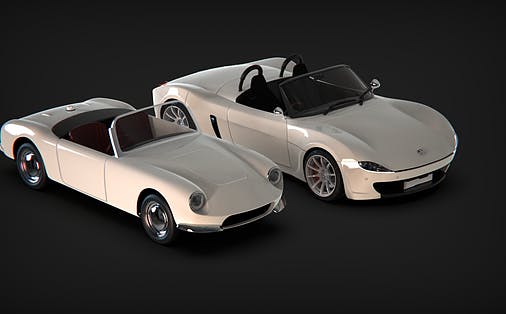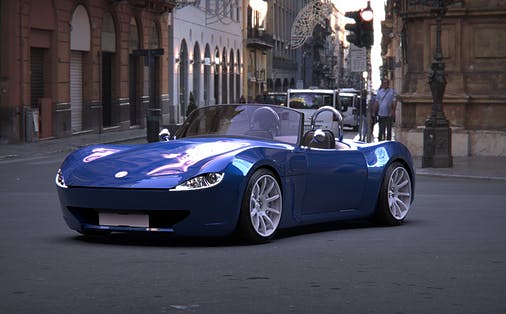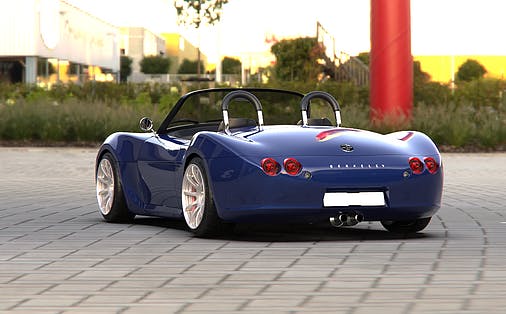Media | Articles
Quirky British sports car rises from the grave
Sixty years after Berkeley Sports Cars shuttered its factory, the little company is back with an innovative new roadster and coupe.
Between 1956 and 1960 the company built lightweight fiberglass-bodied sportsters, mostly powered by tiny two-stroke engines. Its first car, the SA322, was even driven by Sir Stirling Moss at Goodwood. A number of different iterations of the same theme appeared and, for a while, Berkeley’s fortunes looked promising. Around 1200 of its SE328 models were sold and a three-wheeled T60 sold in even greater numbers. The four-stroke Bandit of 1960 was to be Berkeley’s big-time break, but it was more expensive than the Austin Healey Sprite and MG Midget and only two were made. The company went bankrupt in 1960.

Now the Bandit is back, built around a composite structure that Berkeley calls a “Bio-Chassis,” which uses organic flax instead of carbon fiber and tree resins to replace bonding chemicals.
The platform can accept a variety of powertrains including a mid-mounted combustion engine or EV power. Berkeley claims that its design is so flexible that would suit an inline-four, V-6, or V-8 and can be configured for front, rear- or all-wheel drive. Suspension is by double wishbones with pushrod dampers.
At its launch the new Bandit will be powered by a 405-hp, 2.3-liter Ford EcoBoost engine mated to a six-speed manual gearbox. Berkeley claims that the Bandit roadster weighs just 1500 pounds and will reach 60 mph from a standstill in 3.5 seconds. The hardtop GT is a little heavier and a fraction slower.
Marketplace
Buy and sell classics with confidence
The Bandit is set to cost £40,000–£60,000 ($52,000–$78,000) and production begins in 2021 at the Biggleswade factory just north of London.








I have just completed the restoration of a 1959 SE 492. I built is as a period correct race car I watched at Watkins Glen race track in the 60s. I just LOVE this little devil. You can see it on my website …………..Jim.